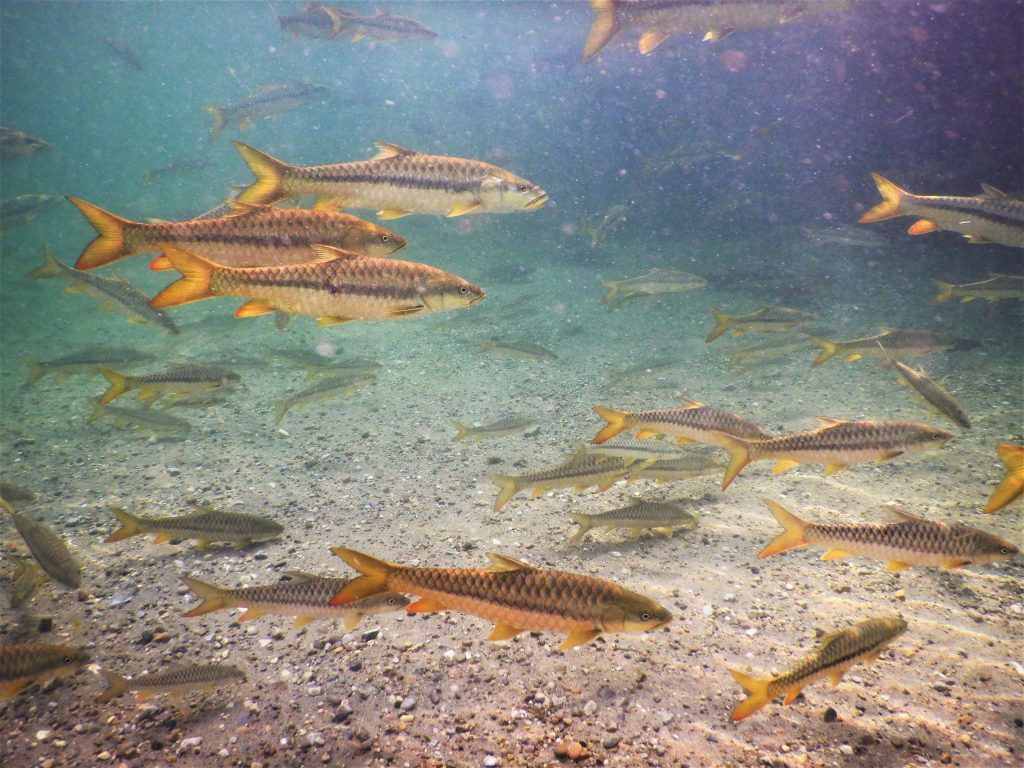
Fish
Principal Investigators:
Dr. J. A. Johnson (Wildlife Institute of India)
Co-Investigators:
Dr. Anuradha Bhat (Indian Institutes of Science Education and Research)
Dr. K. Sivakumar (Wildlife Institute of India)
Dr. Prasanta Nanda (Dera Natung Government College)
Dr. Vidyadhar Atkore (Salim Ali Centre for Ornithology and Natural history)
Freshwater fishes are the best-known group of aquatic vertebrates, and they exist at or near the top of the aquatic food chain. They are highly sensitive to environmental changes in the habitats, and a good congregation of specialized fish indicates the good quality of the freshwater ecosystem. However, in the last decades, freshwater habitats have been extensively altered due to developments, and human activates. The cumulative impact of aquatic habitat alterations such as flow obstructions, entry of untreated effluents from cities, industries, and agricultural fields, and the introduction of invasive species are main disturbances to the freshwater fish population and their habitats. The projected changing climate variables coupled with local impacts will cause reduction or loss of fish species from the particular landscape. Given the importance of maintaining healthy freshwater habitats, it is necessary to monitor these ecosystems using suitable indicator fish species.
Fishes that inhabit streams/ rivers are highly specialized in their morphology and exhibited a high degree of endemism to a particular watershed. The presence and abundance of these unique fishes can be measured as an index of the quality of freshwater habitats over a period. Fish can be monitored by conducting periodic fish sampling using standard fishing gears in a permanent monitoring station. Parameters such as the presence/absence of indicator species, the abundance of select species, and body size can be used to monitor trends in fish populations. In addition to that, the long-term collection of fish population status and environmental variables (that includes spatial-temporal changes) can provide baselines for testing the effects of natural and anthropogenic disturbances on fish populations over the period.
